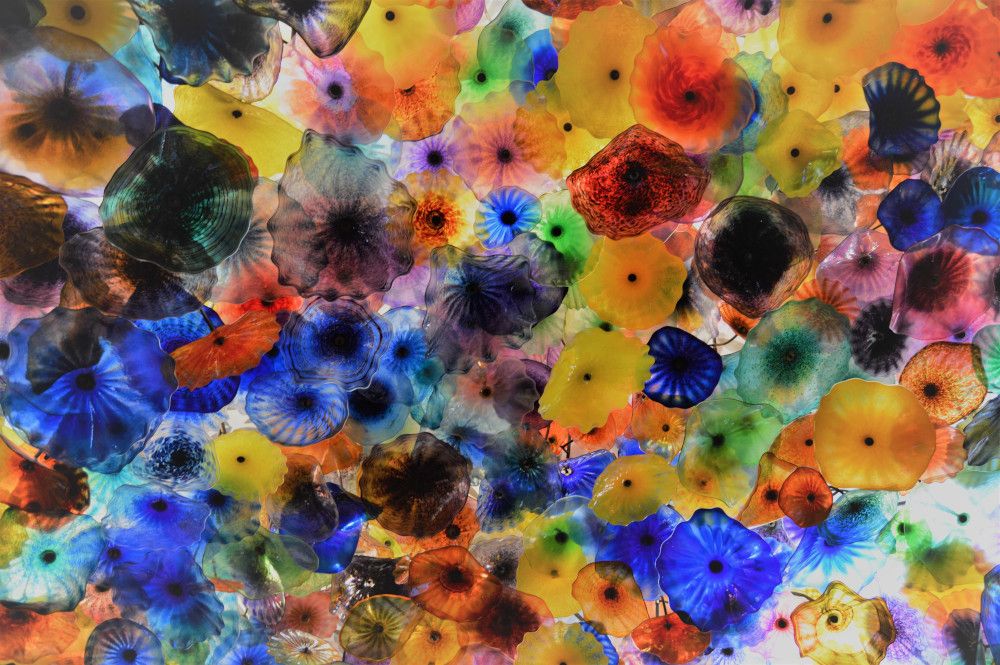IRL (Part II): Symbiosis and Interdependence

In the first part of this series, we discussed the value of community hubs - physical spaces where groups with common interests meet to commune, brainstorm, learn, and work together. We have also talked about the AKASHA Hubs, and I promised to tell you a bit more about them.
Before we get to this, however, I'd like to quickly go through a few concepts that often pop up whenever we talk about AKASHA Hubs: Holons, Social Holons, Holarchy, Commons, and Reciprocating Human. This will be a quick, high-level review. If you're already familiar with the ideas behind these concepts then please, feel free to jump to the next part.
HOLON
The root of the word "holon" comes from the greek "holos" - which means whole, entire, complete in all its parts - to which the suffix "on" is added to represent, somewhat conversely, the concept of a particle - for example, in words such as proton, neutron, and electron. Therefore, a holon is something that is simultaneously a whole and a part.
The word "holon" was introduced as an artifact to Systems Theory by the Hungarian British author and journalist Arthur Koestler in 1967's book Ghost in the Machine. According to Koestler, a holon is something that has integrity and identity by itself, and therefore is a self-contained, self-regulating system; but at the same time it is part of a larger system, and so is a subsystem. As a Janus-faced model, it has one of its manifestations acting autonomously, giving directions to its internal components; and the other looking at, and serving as part of the larger system - a larger holon. Therefore, holons represent a dichotomy: autonomy and symbiosis - a tipping point between chaos and order, one might say.
Koestler was heavily influenced by the Parable of the two watchmakers, introduced by 1978's Nobel Prize in Economics Herbert Simon in the paper The Architecture of Complexity. In this parable, Simon describes the complex relationship of sub-systems and their larger whole, and concludes that complex systems will evolve from simple systems much more rapidly if there are stable intermediate forms than if there are not, especially when the respective environment is susceptible to disturbance (and which aren’t, one might ask?).

Photo by Vincent van Zalinge on Unsplash
SOCIAL HOLONS
The term "social holons" refers to the relationship among different individual holons when they operate collaboratively, i.e. a collective of holons working towards common objectives.
Social holons can be compared to flocks of geese. Each goose is an individual holon and the flock is a social holon. Although the flock moves as a single unit, following the orchestration of a specific lead goose, the flock is by no means obliged to follow that lead, they simply do so due to their intersubjective awareness. Social holons, unlike individual holons, do not have dominant monads, only a dominant mode of discourse.
As American philosopher and writer Ken Wilber said:
"Social holons emerge when individual holons commune; they also [like individual holons] have a defining pattern (agency or regime), but they do not have a subjective consciousness; instead, they have distributed or intersubjective consciousness. Examples include galaxies, planets, crystals, ecosystems, families, tribes, communities."
If you'd like to, you can watch Ken Vilber talking about Social Holons here.

Photo by Courtney Williams on Unsplash
HOLARCHY
Holarchy is how holons organize themselves when they collaborate. The suffix "archy" means a rule or a form of government, as in a ‘ruler’. The term Holarchy, also introduced by Koestler in Ghost in the Machine, is necessary because holons do not organize themselves in hierarchies, since hierarchies by definition have a top and a bottom, and the relationships between holons is, as we've seen, somewhat particular.
As American philosopher David Spangler said:
"In a hierarchy, participants can be compared and evaluated by position, rank, relative power, seniority, and the like. But in a holarchy each person’s value comes from his or her individuality and uniqueness and the capacity to engage and interact with others to make the fruits of that uniqueness available."
Different holarcic system levels consist of each other, i.e. they are subsystems to one another. Ergo, when the "lower level holons" (the subsystems) join the "higher level holon" (the supersystem), new characteristics emerge that extrapolate the qualities of all the subsystem-holons individually 💪🏽
COMMONS
As a broad definition, commons are natural or human-made resource systems that are, or that could be, enjoyed collectively. According to economists Samuel Bowles and Herbert Gintis' book A Cooperative Species: Human Reciprocity and Its Evolution, commons can be also defined as a social practice of governing a resource, not by state or market, but by a community of users that self-governs the resource through institutions that it creates.
An organization structured around the principles of commons you might be familiar with is the digital rights group Electronic Frontier Foundation (EFF).

Photo by Vincent van Zalinge on Unsplash
RECIPROCATING HUMAN
Reciprocating human is a concept that stands in contrast to the idea of homo economicus. While the latter states that human beings are exclusively motivated by self-interest, the former defends that humans - as cooperative actors - have a propensity to cooperate, and are motivated by improving their environment through reciprocity.
In the essay Tragedy of the Commons, American ecologist Garrett Hardin describes a group of herders whose pursuit of self-interest leads to the overgrazing of a pasture, driving it to ruin. But herders, fishers, and other users of common resources frequently prevent this tragedy, coming up with ways to repress free riding in defense of their common objectives. A distinctive characteristic of reciprocating humans is that we cooperate in large groups, even with those to whom we aren’t related, e.g. giving to charity, participating in political movements, and conforming to social norms.
WHAT ELSE?
A few other relevant concepts you might be interested in learning more about: Decentralized Autonomous Organization (DAO), a type of organization represented by rules encoded as a computer program that is transparent, controlled by stakeholders, and not influenced by a central power; and three particular types of DAOs which seek to provide legal compliance to the elementary DAO concept: LAO (the merge of a DAO with a Delaware limited liability company), Distributed Cooperative Organizations (DisCO), and Decentralized Autonomous Associations (DAA).
In the next parts of this series, we will talk more about the AKASHA Hubs and see how these different pieces fit together.
In the meantime, feel free to join the conversation on Twitter, LinkedIn, Facebook, and Discord, and subscribe to our newsletter to make sure that you’re always kept up-to-date with what we’re doing.
Header image by Mario Purisic on Unsplash.

